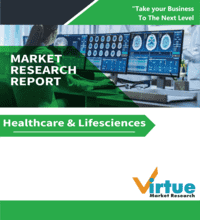FGFR Positive Gastroesophageal Cancer Market Size (2025-2030)
The FGFR Positive Gastroesophageal Cancer Market is defined as a specialized subset of oncology targeting patients diagnosed with gastroesophageal cancer exhibiting fibroblast growth factor receptor (FGFR) alterations. These genetic aberrations, such as FGFR amplifications, mutations, or fusions, drive tumor progression, offering an actionable target for precision medicine. The market encompasses emerging and marketed therapies, leveraging FGFR inhibition to improve survival and quality of life.
Disruptive Impact and Opportunities:
The FGFR-positive gastroesophageal cancer market represents a disruptive innovation in oncology, addressing an unmet need for targeted therapies in a patient population with limited options. Breakthrough therapies targeting specific FGFR alterations are reshaping the treatment paradigm. Oral FGFR inhibitors enhance convenience and compliance compared to traditional chemotherapy. Selective inhibition reduces systemic toxicity, offering a better safety profile than standard treatments. This rapidly expanding market presents substantial opportunities for stakeholders, driven by the rising prevalence of FGFR-positive cancers and advancements in biomarker-based diagnostics.
Key Companies:
- AstraZeneca
- Bayer AG
- BeiGene, Ltd.
- Bristol-Myers Squibb Company
- Eli Lilly and Company
- Incyte Corporation
- Merck & Co., Inc.
- Novartis AG
- QED Therapeutics, Inc.
- Taiho Pharmaceutical Co., Ltd.
Market Segmentation:
By Type
- FGFR Inhibitors
- FGFR1 Inhibitors
- FGFR2 Inhibitors
- FGFR3 Inhibitors
- Pan-FGFR Inhibitors
- Monoclonal Antibodies
- Combination Therapies
- FGFR Inhibitors + Chemotherapy
- FGFR Inhibitors + Immunotherapy
- Others
By Route of Administration
- Oral
- Intravenous (IV)
- Others
What’s in It for You?
- Gain insights into disruptive FGFR inhibitors transforming gastroesophageal cancer treatment.
- Identify strategic opportunities in emerging drugs, biomarkers, and diagnostics.
- Stay ahead by understanding competitive dynamics and market entry strategies.
- Explore partnership and investment opportunities with leading players and innovators
- Leverage this report for robust strategic planning and decision-making in a fast-evolving market.
1. Fgfr Positive Gastroesophageal Cancer Market - Executive Summary
1.1. Introduction
1.2. Objectives
1.3. Key Findings
1.3.1. Market Size 2025 & 2030: By Key Country (10MM)
1.3.2. Global Market Size 2025 & 2030: By Key Segment
1.3.3. Key Investments & Startup Analysis
1.4. Research Methodology
2. Understanding the Disease
2.1. Disease Overview
2.2. Classification
2.3. Signs and Symptoms
2.4. Risk Factors
2.5. Causes
2.6. Disease Biology & Digital Innovations
2.7. Stages & Staging System
2.8. Diagnostic Algorithm
2.9. Current Treatment Practices & Algorithm
2.10. Current Standard of Care and Treatment Gaps
2.11. Patient Demographics and Treatment Pathways
3. Guidelines
4. Unmet Needs
5. Epidemiology and Patient Population
5.1. Epidemiology Key Findings
5.2. Assumptions and Rationale: 10MM
5.3. Epidemiology Scenario: 10MM
5.4. U.S. Epidemiology Scenario
5.5. EU-5 Epidemiology
5.5.1. U.K. Epidemiology Scenario
5.5.2. Germany Epidemiology Scenario
5.5.3. France Epidemiology Scenario
5.5.4. Italy Epidemiology Scenario
5.5.5. Spain Epidemiology Scenario
5.6. Japan Epidemiology Scenario
5.7. China Epidemiology Scenario
5.8. Australia Epidemiology Scenario
5.9. India Epidemiology Scenario
6. Real-world Data & Real-world Evidence
7. Drug Development Landscape
7.1. Existing Key Drug Candidate Profiles/ Marketed Therapies
7.2. Competitive Analysis and Differentiation
7.3. Overview of Similar/Competing Drugs in Clinical Trials
7.4. Future Trends and Emerging Drugs
8. Regulatory Strategy and Potential Challenges
8.1. Regulatory Pathways in Key Markets
8.2. Anticipated Regulatory Hurdles and Mitigation Strategies
8.3. Case Studies in Oncology Drug Regulation
8.4. Impact of Potential Changes to Regulatory Framework
9. Commercial Landscape
9.1. Market Size & Growth Rates
9.2. Key Approvals & Anticipated Loss of Exclusivity
9.3. PESTLE & Porter’s Five Forces Analysis
9.4. Market Shares, Positioning/Ranking
9.5. Market Drivers
9.6. Identification of Threats
9.7. Digital Evolution in Commercialization
10. Market Segmentation
11. Pricing, Reimbursement, and Access
11.1. Competitive Pricing Analysis
11.2. Reimbursement Landscape and Challenges
11.3. Strategies for Market Access and Equity
11.4. Patient Spending/Expenditure Analysis
12. Future Trends, Disruptions, and Opportunities
12.1. Analysis of Emerging Trends
12.2. Technological Impact
12.3. Impact of Potential Market Disruptors
12.4. Opportunities for Future Development and Expansion
12.5. Considerations for Investment Opportunities
13. Global Market Dynamics
13.1. Regional Regulatory Disparities
13.2. Cross-Border Partnership Strategies
13.3. Global Supply Chain Dynamics
13.4. Case Studies: Success and Failure in Global Markets
13.5. Strategies for Global Expansion and Localization
14. Company Profiles
Download Sample
Choose License Type
2500
4250
5250
6900



